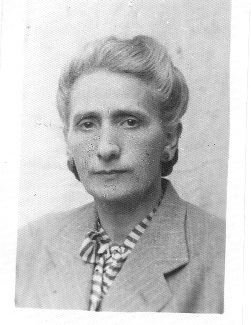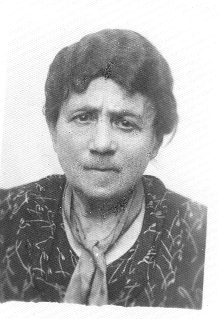
Return to Gorlice
by J. Victor Stern
My father, who was 76 at the time, was in Poland the last week of August 1999. He was taking a side trip from Prague, Czech Republic, where he was going to attend a Holocaust survivors' conference. He hadn't been back to Poland, the land of his birth and youth, since the Nazis moved him from a concentration camp in Mielec to a camp in Flossenberg, Germany, in April 1944. By coincidence, I was going to be in Poland the following week in connection with my work; so I decided to spend a couple of days with him in his hometown, Krakow.
The day I arrived in Poland, I went by train from Warsaw to Krakow. There, I went with my parents to see the apartment where my father had grown up, the place where his father's business was located, and the site of the Hebrew grade school he had attended. My mother was accompanying him on the trip. The school was located in the Kazimierz section of Krakow, which was the part of the city where most of the 70,000 pre-World War II Jews lived. My father had left Krakow with his mother and sister in the fall of 1940 to avoid having to move to the ghetto that the Nazis had created to concentrate and control all of Krakow's Jews. They went to Gorlice to live with his maternal grandmother. Gorlice is about 60 miles south of Krakow and was the place where my father spent the summers of his youth. It was a small town of about 8,200, half its inhabitants Jewish.
Amazingly, not having been in Krakow for 55 years, my father was able to remember the places we visited. The buildings of his apartment and school were still as he remembered. However, his father's place of business was no longer there, even though a building that had been his uncle's home and hardware store was still on the site. It was exciting for him to revisit these places, along with the Kazimierz neighborhood, to show me the memories of his youth.
The second day he hired a guide and a driver to take us on the two and a half-hour drive to Gorlice in search of memories there. The nervousness not evident in Krakow appeared on the way to Gorlice. Even though Gorlice held dear memories for my father of summer vacations with his grandmother, the true nightmare of his survival of the Holocaust had begun in this small town.
As we drove into the center of town it was raining, and a large crowd had gather to attend Sunday mass at the large Catholic Church located there. We parked and started to walk around under umbrellas, my father immediately recognizing the general layout of the town. We walked for a short distance, and he located the home where his grandmother had lived and where he spent many summers enjoying her love and pampering. In many ways my father had felt closer to his grandmother than he had to his own mother.
He then attempted to find a second apartment he had helped his grandmother to move into. We found the street, but not having the address was an encumbrance since the apartments on the street were very similar to each other and the stores under them were of course not those of 55 years earlier. The next search was for the apartment that my father had moved his grandmother, mother, and sister into. It was in the ghetto that the Nazis had created in late 1941. However, not a clue remained of the ghetto and perhaps the memories were buried too deeply. In the meantime, our driver had found the town museum and suggested that we visit it. The museum curator was there and opened it for us. The first room of the museum held remembrances, postcards and pictures, of the Jewish pre-war parts of Gorlice. We spent some time looking at them and then asked if the curator had any historical information about the ghetto or the town's pre-war Jewish inhabitants. We were hoping to find a map to help locate the ghetto apartment. She said she had nothing that could help us but did show us a paperback book that had been written in Polish about the Jews of Gorlice [Zydzi gorliccy, by Wladislaw Boczon]. There were some names and pictures in the book but almost nothing my father could recognize. He did see in the book one picture he knew all too well. It was of a friend of his in a concentration camp uniform. It had been taken shortly after he and this friend were liberated. It was one of a pair of pictures that were taken of him with this friend, with both of them putting on concentration camp uniforms over their clothes to preserve a memory in a photograph. However, only his friend's picture was in the book, probably because the friend had grown up in Gorlice while my father was only a summer resident.
The curator seemed to have nothing else to offer us, but we considered the visit worthwhile nonetheless. We still had some other parts of Gorlice we wanted to see. Just as we were about to leave the museum, the curator came out with a manila envelope containing a large handful of passport size photos--about thirty of them--taken as the authorities rounded up Gorlice's Jews for re-settlement in the ghetto. All the pictures were from people with last names beginning with the letter "S." My father leafed through them one by one. He was about halfway through the pile when he gasped and handed me the picture of his sister, Tosia. Leafing through a few more, he came upon his mother Erna's picture. This was the first time I could clearly see what my grandmother had looked like. My father's eyes welled up with tears as he sat down from the weight of the memories these pictures brought back.
My father continued to go through the pile until the very last picture. That last picture was of his grandmother, my great grandmother. He broke down at this discovery, having found the connection he was looking for. He grandmother was the person he had thought of most through the trials of his survival during the Holocaust. He retains to this day a belief that her spirit is what gave him the will and strength to survive. He had not seen her face since the day he buried her after she died in the Gorlice Ghetto. All three pictures were signed, and my father learned for the first time that his grandmother's given name was Rachela. He had known her as "Babcia Ricka" or what others had called her, "Ricki." We placed the pictures side by side, looking at three generations of the women who had been in my father's life before the war.
It is interesting to note that my wife, Edna, and I named our younger daughter Raquel without knowing her great great grandmother's name. Furthermore, when we named her we didn't know that her great great grandmother's name on Edna's mother's side was also Rochel. She, too, died in the Nazi camps.
We arranged for the curator to make copies of the pictures and send them to us. We left the museum with the feeling that something special had occurred and headed to a restaurant for a well-deserved lunch. We then found the park my father had played in as a boy and where he was denied entry after the Nazis occupied the town and a sign was put up that said: "No Jews, Gypsies, or Dogs Allowed." We strolled in the park, and my father reminisced about his climbs up a nearby mountain as we enjoyed the green and brightness of the park. The rain had stopped. We drove around looking for the building that my father was detained in and sneaked out of, only to see his sister for the last time as she was transported away in a train cattle car to her extermination in Belzec. His mother had suffered the same fate. We found the building in a factory complex. It had a plaque on it to the memory of the Jews, Poles, and Russians who were detained there before shipment to slave-labor and extermination camps.
We had thought to visit the remains of the Jewish cemetery, but it was getting late and we still had a long drive back to Krakow. So we called it a day--and a very rewarding day at that. My father had achieved what he had wanted to and then some. Finding the pictures exceeded what anyone could have hoped for. He also was able to share those moments with me. I am glad I was there, and I will share the same moments with my children and, I hope, someday their children through this narrative and the pictures I took.
The next day my parents continued
on to Prague, and I took a tour of Auschwitz-Birkenau. The experience
was overwhelming — perhaps a story for another time.
 |
 |
 |
|
Updated: May 2024
Copyright © 2023 Susan Kim Original copyright © 2005 M S Rosenfeld |